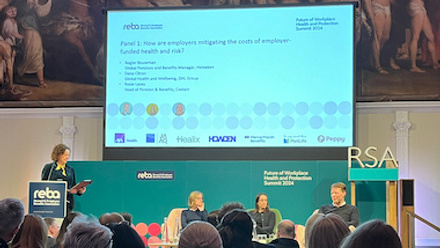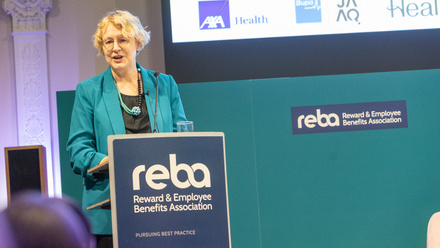Katharine Moxham: Seven crucial group risk discussions for employers and benefits advisers

Here are seven discussions about group risk benefits that employers can instigate with their advisers to ensure they get the most from their benefits and accompanying services.
1. How are group risk products relevant to my organisation?
The industry recognises that every business has its own needs and there are solutions to meet every budget. In today’s age there is no reason why every business can’t provide some kind of group risk financial protection for its staff.
Advisers will begin the consultation process by giving an overview of the marketplace, and can explain how group risk products can help support an employer’s business and staff. There is a huge range of supportive services that come with a group risk policy and insurers are constantly developing new ones, so whether you are an SME or a large corporate, it’s important that you know what group risk can do for your organisation.
2. What is the longevity of a recommended product?
Employers must be open in sharing their organisations’ future strategy and what impact they believe it will have on recruitment and retention. If all parties have a good grasp of how the organisation’s employee demographics may develop, advisers will be able to select a product structure that is right for now and for the foreseeable future.
3. The lifecycle of a typical employee
It makes sense for employers to share information about the lifecycle of a typical employee – how they are recruited, where they are likely to have come from, how long they might stay, for example.
This is to ensure that group risk products dovetail with the way in which the business operates. If, for example, employees who are unable to work are ultimately managed out of the business, the structure and emphasis for group income protection provision will be very different from that of an organisation whose employees are supported for many years.
4. Health screening, health & safety, wellbeing initiatives and other benefits
Many organisations encourage their staff to undertake health screening checks as well as having other wellbeing initiatives in place. Many employers have excellent health and safety procedures and records. And many employers have other supportive services and benefits in place, such as private medical insurance and access to stress counselling. Employers must share these facts as it could give underwriters a more positive view, which may result in more favourable pricing.
5. What else comes with a group risk policy?
A group risk pay-out can make a huge difference to a family at a difficult time but group risk providers have also worked hard to offer employers extra value by giving access to extra support services which can be used by employees, business owners, line managers and HR on a daily basis.
For employees, these can include an employee assistance programme (EAP), preventative support, stress management, fast-track access to counselling, second medical opinion and more.
For employers, support can include HR and employment law advice, legal document-writing systems, telephone support for difficult situations, mediation and more. Group risk support is also moving forward to include help for employers in encouraging better health behaviours, for example giving access to GP services, health tracking apps and mental health support for staff.
6. Can I save money elsewhere?
Employers need to welcome advisers undertaking a full audit of existing products and services. There are so many touchpoints with group risk – such as private medical insurance, occupational health, employer’s liability and personal accident – that it’s worth checking out where products might overlap or where there might be gaps that should be filled. It’s also worth making sure that you’re not paying separately for a service that you could get for nothing under your group risk policy/policies (such as an EAP).
7. How can we embed this?
Taking the time to embed group risk and all its support into procedures, trigger points, protocols and communications is well worth the effort. Your adviser and insurer should be able to help you with this. Employers that use group risk services every day, as they are intended, will derive the greatest benefit from their spend.
Strong tri-partite relationships between employer, adviser and provider are also key – working together can produce some extraordinary solutions to help employers and their staff.
It’s important that all parties are forthcoming with information to ensure that the buying process is as informed as it can possibly be. Group risk products are often the unsung heroes in an employee benefits package but they don’t have to be – when employers, advisers and providers work together in ensuring the right choice of provision, the positive effects have the best chance of being appreciated throughout a business.
This article is written by Katharine Moxham, spokesperson for Group Risk Development (GRiD)







